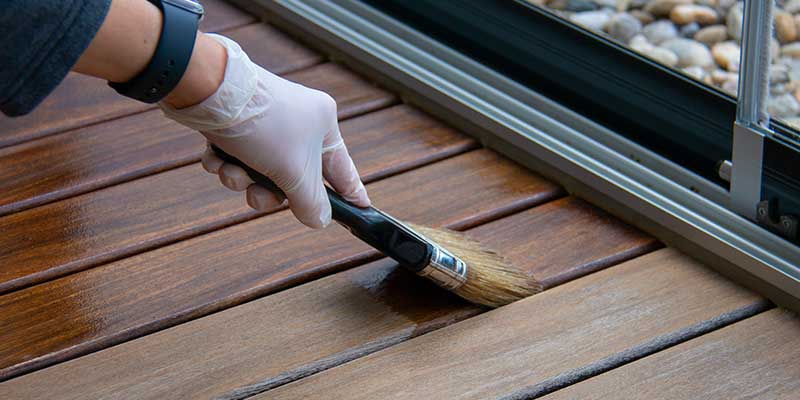
Best Tips for Protecting Your Deck from Georgia’s Weather
Georgia’s deck weather is a rollercoaster, soaking humidity, pop-up thunderstorms, blazing UV, pollen waves, occasional freezes, and coastal salt air compete to beat up your boards and finishes.
Protecting your deck from Georgia’s weather here means building smart, finishing correctly, and following a maintenance rhythm tailored to local conditions. As a Georgia-focused painting and staining partner, D&R Painting and Construction helps homeowners turn that challenge into a simple plan for protecting their deck with results that look great and last.
How Georgia’s Climate Wears Down Decks
Humidity & Frequent Rain
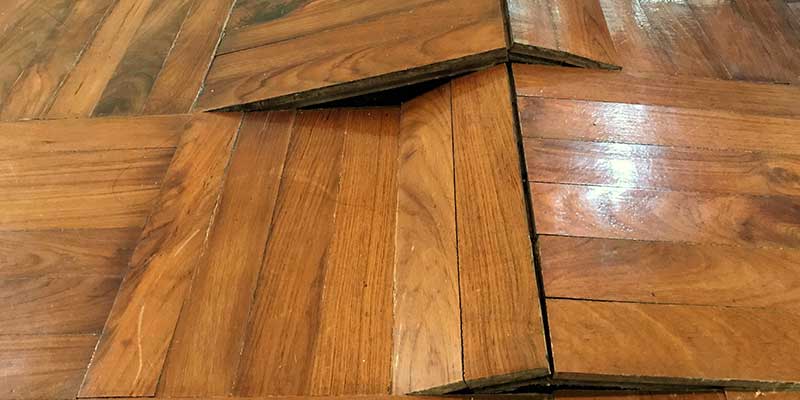
Moist air and frequent showers push moisture into wood fibers, swelling boards and feeding mildew. Wet cycles followed by hot sun expand and contract the surface repeatedly, stressing fasteners and thin finishes.
| Effects: When boards absorb water unevenly, they cup and crown, creating trip points and puddles. Persistent dampness supports decay fungi, especially at end grain and hidden hardware. Galvanized fasteners can corrode faster in damp, acidic debris, loosening the connection between boards and framing. |
UV & Heat
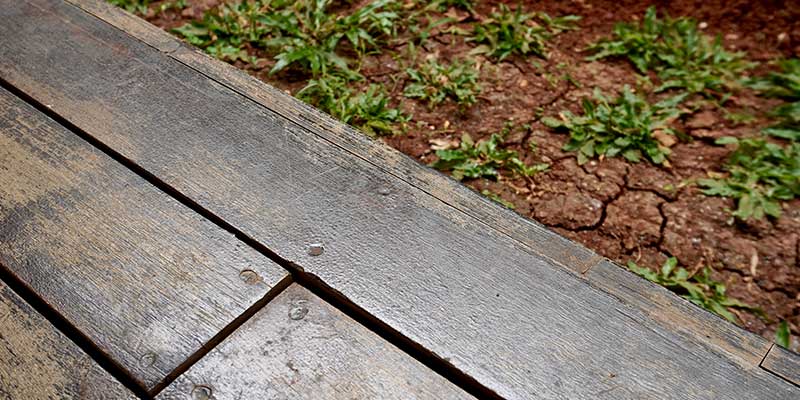
Summer heat bakes horizontal surfaces, and intense UV breaks down lignin in wood, leading to color fade and hairline checking. Darker colors run hotter and dry out faster.
| Effects: As UV attacks exposed cells, you’ll see graying, lifted fibers, and a rougher feel underfoot. The finish thins and loses water repellence, so rainfall penetrates faster and evaporates slower, compounding wear. |
Pollen, Leaves & Red Clay
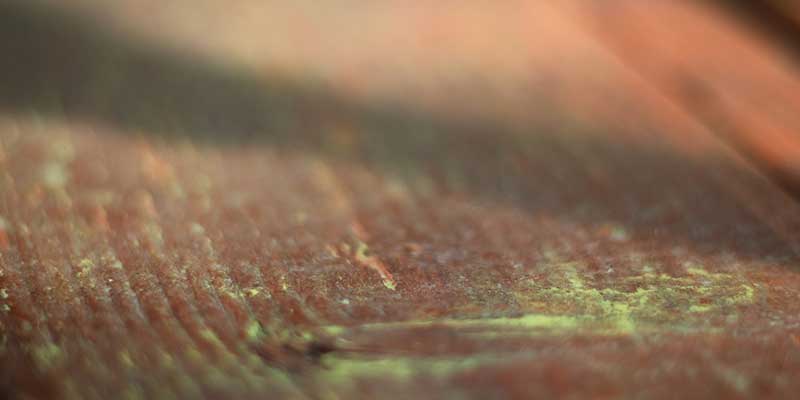
Spring pollen mixes with Georgia rain to form a slick film that traps moisture on the surface. Decaying leaves add tannins and organic acids; red clay can stain and grind into soft wood fibers. If left alone, that film becomes the starter culture for mildew.
| Effects: Stubborn yellow-green pollen bands and rusty clay streaks reduce curb appeal and accelerate finish failure. |
Coastal Salt Air
Salt-laden breezes and intense sun punish both coatings and hardware. Chlorides attract moisture and speed corrosion, while UV and heat increase finish wear.
| Effects: Budget fasteners fail early near the coast, and thin, film-forming coatings peel quickly in salty, humid air. |
Materials That Stand Up in Georgia
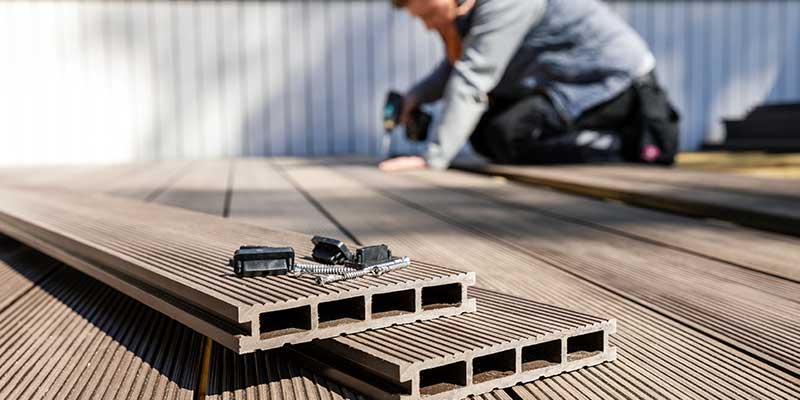
Lumber & Composites
Thanks to affordability and availability, pressure-treated southern yellow pine remains common for structure and decking. Cedar and ipe offer better natural resistance to decay and movement; they cost more but can outlast softwoods with proper care. Composites and capped polymers resist rot and staining but still demand routine cleaning, careful installation, and occasional color refresh to keep heat and UV in check.
Hardware & Fasteners
The wrong fasteners are often the first failure. Moisture, tannins, and coastal salt all test metal durability. Matching hardware to location is a cornerstone of protecting your deck from the weather in Georgia.
Inland, hot-dipped galvanized fasteners and connectors perform well when paired with compatible treated lumber.
Finishes & Stains
Penetrating, oil-modified, and waterborne stains with robust UV packages give the best balance of breathability, color retention, and water repellence. The goal is to slow liquid water while allowing vapor to escape, avoiding the peel cycles common to films.
Semi-transparent finishes showcase grain, block UV, and are easier to refresh than paints or thick films. Penetration ensures the coating moves with the wood, reducing cracking and peeling.
Moisture Control & Drainage Details
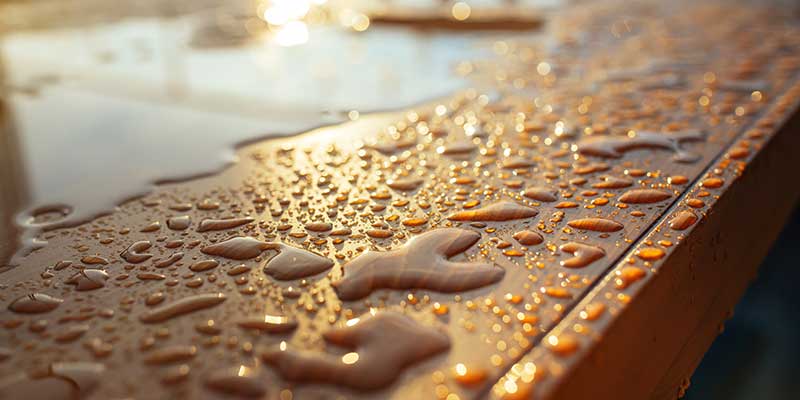
Small construction details have an outsized impact in Georgia’s wet-dry cycles. Thoughtful spacing and sealing prevent water traps that attack from the inside out.
Consistent gaps promote airflow and drainage so boards dry quickly, sealing end grain curbs absorption where wood absorbs the most. Joist and beam tape shed standing water from horizontal framing and extend the life of the substructure. Reliable ledger flashing with kick-out prevents water from sneaking behind the connection to the house.
Grade & Landscaping
The ground beneath and around your deck can be a hidden source of moisture. Managing the grade and vegetation keeps the area drier and healthier. Adequate clearance allows airflow so the underside dries after storms. Grading the soil to move water away prevents splashback and damp microclimates. Planters should never sit directly on the deck; use risers or saucers to stop trapped moisture from etching finish circles and feeding mildew.
UV & Heat Protection
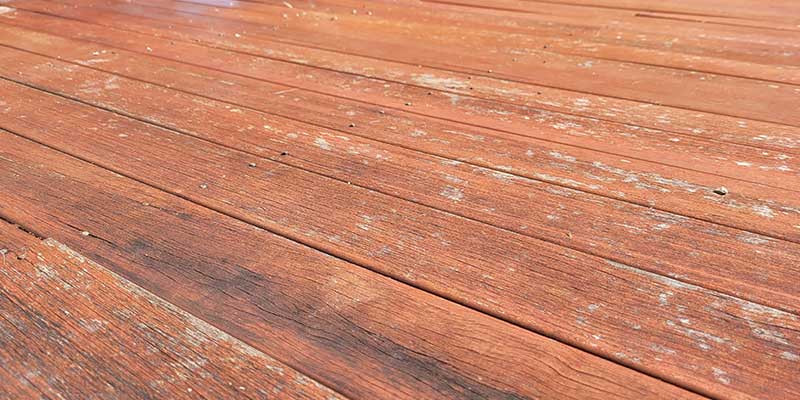
Finishes are not a one-time event in Georgia. Sun and rain steadily consume protectants, so a maintenance rhythm preserves beauty and structure. A gentle clean removes dirt and organics; a brightener resets pH and opens pores for optimal adhesion; a quality stain restores water repellence and UV shielding.
Most decks need this cycle every one to two years, with high-sun locations potentially requiring touch-ups sooner based on the weather for staining a deck finished and recent exposure.
Shade Solutions
Strategic shade reduces surface temperature, color fade, and drying stress. It also makes the space more comfortable in midsummer. Built shade softens UV intensity without trapping moisture against the boards. Use breathable outdoor rugs without rubber backings, which can imprint patterns and trap heat, accelerating finish failure.
Mold, Mildew & Pollen Control
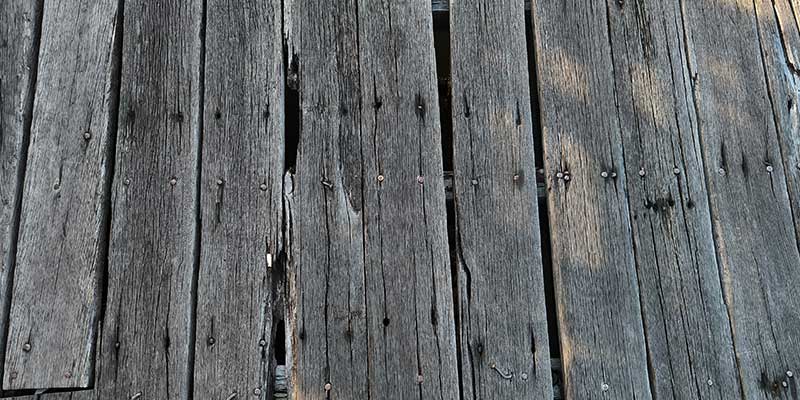
Regular light maintenance keeps surface films from taking hold. Gentle methods respect the wood and the stain. A low-pressure rinse removes loose debris without raising grain. Oxygenated cleaners lift pollen, mildew, and clay without bleaching fibers, and a soft brush preserves the surface so your stain protects your deck from weather between recoats.
Airflow & Sunlight
Mildew thrives in shade and stagnation. Opening the space improves dry times and discourages growth. Keep shrubs cut back from rails and skirts to move air freely. If feasible, use lattice designs or vented skirting so that damp air under the deck can escape after storms.
Storm & Hurricane-Season Prep
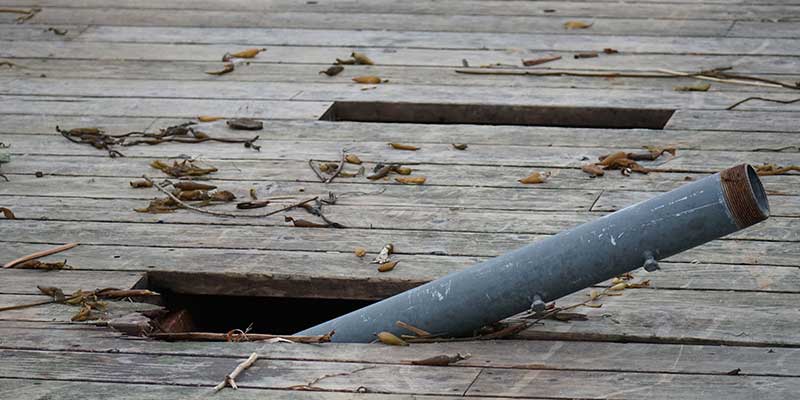
Before a Storm
Preparation reduces projectile risk and water intrusion. A quick check of critical connections goes a long way. Stow or tie down loose items that can scrape finishes or strike railings. Confirm that the rails are rigid and the ledger bolts are snug; loose fasteners can fail when winds flex the structure.
After a Storm
Prompt cleanup prevents long-term staining and rot. It also gives you a chance to catch early issues. Remove branches and leaf mats quickly so the surface can dry. Look for lifted boards, proud screws, and scuffed finish; addressing small failures right away helps the rest of the coating remain intact.
Pest Protection
Moisture control is pest control. Dry structures are less inviting to wood-destroying insects. Avoid piling mulch against posts or skirts. Periodically check the ledger and post bases for tunnels or frass. Where risk is high, coordinate with a pest professional for barrier systems that complement our protective staining plan.
Bees and Wasps target exposed, unfinished wood and corners. Finishing and monitoring are your best defenses. Seal existing holes and finish vulnerable undersides so bees are less attracted to the nest. Traps and seasonal monitoring reduce pressure before it becomes a cosmetic or structural concern.
Common Mistakes to Avoid
- Power-washing at high PSI: Excessive pressure feels effective, but tears fibers and invites premature failure of the next finish coat. With the right tip, detergents, and technique, keep pressure conservative. Clean deeply without shredding the surface that your stain needs to protect.
- Film-forming paints on horizontal boards: Paint-like films trap water and peel in Georgia’s humidity cycle, especially on board tops and end grain. When moisture vapor can’t escape, blisters and flakes follow. Penetrating stains breathe with the wood, making them a better long-term choice for horizontal decking.
- Skipping end-grain sealing and flashing: The fastest failures happen where water sneaks in and soaks the most absorbent areas. Unsealed end cuts and missing or damaged flashing act like funnels for water. Sealing and flashing are inexpensive steps that often paid for themselves in extended service life.
When to Call a Pro in Georgia
These are not cosmetic issues but structural red flags that demand experienced eyes. A pro also knows how to read subtle failure signs that homeowners often overlook.
D&R Painting and Construction partners with trusted pros to evaluate the structure and correct fasteners, flashing, and damage before we restore the finish. When resurfacing is appropriate, we match materials and stains to your location’s specific deck weather profile for a long-lasting solution.
Protect Your Deck from Harsh Weather!
Protecting your deck from Georgia’s Weather isn’t about a single miracle product; it’s about an innovative combination of materials, detailed work, and a steady maintenance rhythm that respects our climate. When you choose a professional like D&R Painting and Construction, you get a local team that understands humidity cycles, UV intensity, coastal salt considerations, and the real-world weather for staining a deck across the state.
We start with a clean and bright surface to reset the surface, select a penetrating, UV-strong semi-transparent stain that suits your sun exposure and wood species, and set a maintenance calendar to make protecting your deck effortless. If you’re ready to refresh color, stop water intrusion, and extend the life of your outdoor space, reach out to us to schedule your consultation and get a customized plan for protecting your deck from the weather built for Georgia.

